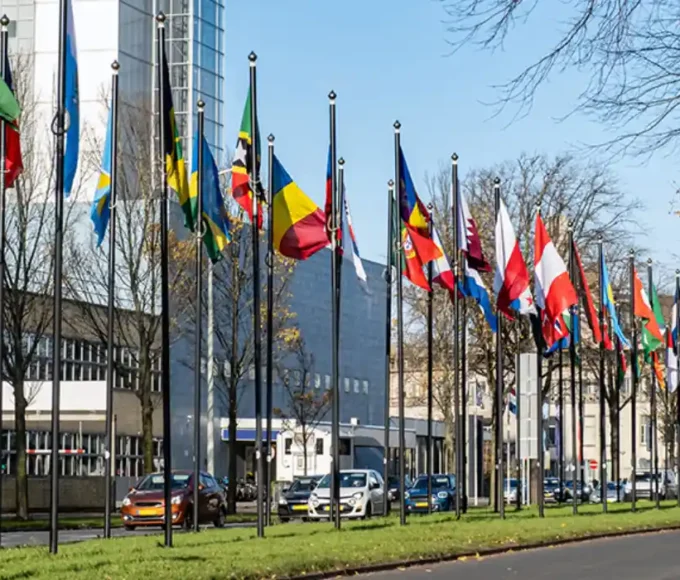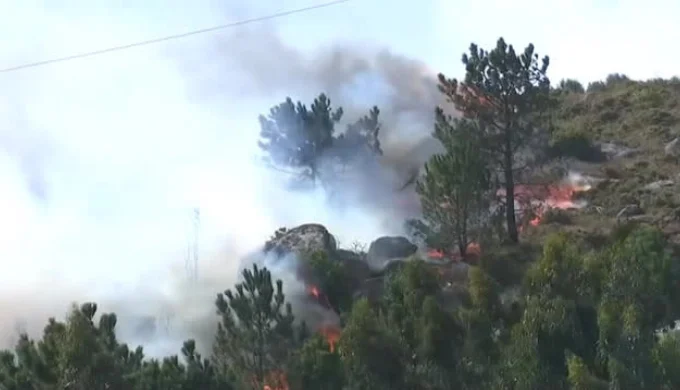Hamas warned on Saturday that an offensive on Rafah could cause “tens of thousands of deaths and injuries” in this town in southern Gaza, where hundreds of thousands of Palestinians are refugees that the Israeli Prime Minister wants to evacuate. causing concern abroad.
New Israeli strikes targeted Rafah on Saturday, where more than 1.3 million Palestinians now live, according to the UN, the vast majority of them civilians having fled the war that has been raging for four months between Israel and Hamas.
Five police officers were killed in two separate strikes, according to Palestinian security sources. Israeli forces said two senior military figures from the Palestinian Islamist movement were killed in one of them.
After ordering the army on Wednesday to prepare an offensive on Rafah, Prime Minister Benjamin Netanyahu asked it on Friday to present a “combined plan” for the “evacuation” of civilians and the “destruction” of the Palestinian Islamist movement in this area. city.
“It is impossible to achieve the objective of the war without eliminating Hamas and leaving four Hamas battalions in Rafah,” which requires “civilians to evacuate the combat zones,” he said.
“We warn of a catastrophe and a massacre that could leave tens of thousands of martyrs and wounded,” Hamas responded.
The head of European diplomacy, Josep Borrell, warned on Saturday against a possible offensive by the Israeli army in Rafah which, according to him, would amount to “an indescribable humanitarian catastrophe”.
A few kilometers to the north, in Khan Younes, the fighting is concentrated in the grounds of the Nasser hospital, the largest in southern Gaza, besieged by Israeli tanks where there are still 300 employees, 450 wounded and 10,000 displaced. . according to the Palestinian Islamist movement’s Ministry of Health.
“Many (Hamas) commanders have been killed and we want to eliminate even more, as well as senior military officials,” said army chief Herzi Halevi, visiting Israeli forces in Khan Yunis.
The war was sparked on October 7 by an unprecedented Hamas attack in southern Israel, which left more than 1,160 dead, most of them civilians, according to an AFP count based on official Israeli data.
In retaliation, Israel pledged to “destroy” Hamas, which it considers a terrorist organization like the United States and the European Union. The Israeli army launched an offensive which left 28,064 dead in Gaza, the vast majority civilians, according to the Ministry of Health of the Islamist movement, in power in the territory since 2007.
Around 250 people were also kidnapped in Israel on October 7 and taken to Gaza. A week-long truce in November resulted in the release of 105 hostages and 240 Palestinian prisoners held by Israel. According to Israel, 132 hostages are still being held, of whom 29 are believed to be dead.
In northern Gaza City, Hind Rajab, a six-year-old girl who had been missing for nearly two weeks amid the fighting, was found dead on Saturday, according to her family.
The young girl was in the car with relatives when they came face to face with tanks which opened fire, according to the family. Hind had initially survived, as evidenced by telephone calls to rescuers, while the other passengers had died.
The Israeli army and internal security agency also claimed on Saturday to have discovered a Hamas tunnel in Gaza City, under the headquarters of the United Nations agency for Palestinian refugees (UNRWA). The head of Israeli diplomacy, Israel Katz, demanded the “rapid resignation” of the head of the UN agency, Philippe Lazzarini.
Unrwa, which Israel accuses of being “totally infiltrated” by the Islamist movement, stressed that the building had been evacuated on October 12.
About 1.7 million people, according to the UN, out of a total of 2.4 million inhabitants, have fled their homes since October 7, many of whom have been repeatedly displaced across this devastated territory, besieged by Israel is plunged into a major humanitarian crisis.
Rafah, backed by the closed border with Egypt, is the last major urban center where the army has not yet penetrated. This city transformed into a gigantic makeshift camp is the main gateway for humanitarian aid, which is still insufficient.
“We are between life and death. We live in the present moment,” says Bassel Matar, a man who took refuge in Rafah.
The forced displacement of more than a million Palestinians “without finding a safe place to go” […] would have catastrophic consequences,” warned Nadia Hardman, migrant and refugee rights expert for Human Rights Watch.
The UN and even the United States, Israel’s main ally, are concerned about the fate of civilians. US President Joe Biden raised his voice against Israel on Thursday, deeming its “response” to the October 7 attack “excessive”.
Saudi Arabia warned on Saturday of the “extremely dangerous repercussions” of an offensive on Rafah. Germany denounced “a predicted humanitarian catastrophe”.
Even if “the trauma of the Israelis is real” after October 7, “the situation in Gaza is unjustifiable,” underlined the French Minister of Foreign Affairs, Stéphane Séjourné.
According to US media, CIA Director William Burns will travel to Egypt next week to support a truce deal.
The war in Gaza also threatens to spread to Israel’s northern border with Lebanon, where there are daily exchanges of fire between the Israeli army and Lebanese Hezbollah, an ally of Hamas.
Three people, including two civilians, were killed on Saturday in Israeli strikes in Lebanon, including one targeting an official of the Palestinian movement Hamas who survived, Lebanese and Palestinian security sources told AFP.
This article is originally published on news.dayfr.com







